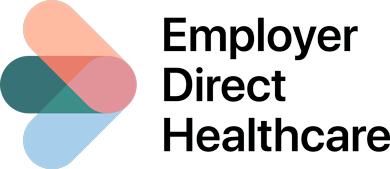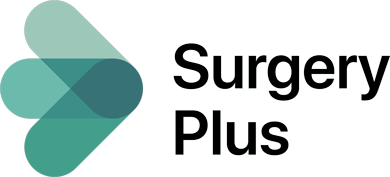Each year, Employer Direct Healthcare hosts a series of client advisory summits to facilitate meaningful conversations with benefits leaders and health care industry experts about big topics in the employer health space. Our CEO John Zutter set the tone right off the bat by saying, “Welcome to Day 1 of the anti-conference. We want this to be about you. How can we help you deliver better for your people?”
At the 2024 summits, we covered a lot of ground—not surprisingly, GLP-1s were a popular topic. But we also dove deeper into the criticality of partnering with health vendors that can materially impact spend and quality.
It’s clear benefits leaders are overwhelmed by the array of point solutions available, and admit their employees are too. According to the Health Transformation Alliance (HTA), there are 116 verticals representing 441 unique health vendors an employer could choose to implement—not to mention the various plan design and carrier changes available. So, how should employers prioritize and select from all these options in order to materially improve the impact of their health strategy?
Spoiler alert: the answer is not moving to a High Deductible Health Plan (HDHP) or changing your out-of-pocket maximums. That’s because the majority of spend is driven by individuals who exceed these maximums, so the consumer benefit intended hasn’t played out. “The result of those changes is just risk transfer, and American workers are already struggling to afford the care they need,” said Zutter.
When it comes to point solutions, industry experts we talked to overwhelmingly said less is more. Vendors that can’t impact care delivery or cost aren’t going to be worth the overhead necessary to manage them, benefits leaders shared. They’ll also add confusion to your benefit plan and make it harder for your employees to understand what they have and how to use it.
According to Candace Jodice, former leader of CVS’s billion-dollar health plan, the first two steps in evaluating point solutions are looking at your data and talking to employees to understand their true pain points in the healthcare system. “The traditional TPAs aren’t doing their part, which puts extra burden on benefits leaders to evaluate these solutions,” she added.
Nearly every benefits leader that attended this year’s summits said they’re building their own data warehouse, pulling in all the relevant data and doing the hard work to really analyze the results. “We’re only going to keep the partners that actually move the needle on savings and employee experience,” said Matt Harmon, VP of Benefits at AutoZone.
#1 Direct contracting
Network strategies that change reimbursement rates, such as narrow networks and COEs, have been highlighted by the Business Group on Health as the #1 delivery approach to reform healthcare. Former Business Group President and EDH advisor Brian Marcotte has said “driving hard-dollar reduction in spend requires changing what you pay for services, including optimizing site of care and reimbursement rates.”
At EDH, we’re proud that SurgeryPlus delivered $15 PEPM savings and a 2.2% reduction in overall trend for our clients last year. The way we’re able to do this is by contracting directly with top specialists across the country and turning one of the highest inputs on a typical surgical bill—facility fees—on its head.
Medicare reimbursement requirements largely solved for potential overages in physician fees, but facilities still incent billing for every line item possible within a medical claim, which means there’s a huge margin baked in for them. The facility fee accounts for 80% of the total price and represents the biggest opportunity to drive savings. EDH contracts charge at 127% of Medicare reimbursement, less than half of the health plans’ 300%.
When CVS implemented a narrow network, Jodice was pleasantly surprised by the response. “We really worried employees would see the narrowed choice as a negative, but once they realized we’d done the extra work to make sure they were matched with a high-quality provider, they were happy. It’s less about finding the great doctors and more about eliminating the bad ones,” she explained.
“Over the last seven years, we’ve changed health plans, consultants, PBMs and a host of other solutions, but we’ve kept SurgeryPlus because it works. We’re beating the market in trend because of solutions like this,” said AutoZone’s Harmon.
#2 Transitioning site of care
Unlike traditional COEs, EDH prioritizes local site of care by better leveraging the community health system and ambulatory surgery centers (ASCs). The treatment of rare and highly complex diseases may require a nationally renowned system, such as select EDH partners like Cleveland Clinic, but that level of acuity is the exception, not the rule.
“We want to steer to local doctors whenever possible,” stressed Zutter. The majority of EDH members live within a 29-mile drive to one of our approved facilities. It’s especially fond of ASCs because their footprint and location create a dramatically better member experience, and they’re proven to deliver lower complication and infection rates, which reduces downstream costs. Not to mention, ASCs are cheaper to operate than sprawling hospital systems, which also takes a big chunk out of the 80% facility fee as mentioned above.
Alan Davis, MD (pictured above), an orthopedic surgeon and staff emeritus of Cleveland Clinic, thinks 60% of major orthopedic surgeries will be done in an ASC in the future, compared to just 10% today. “Surgeons love operating in an ASC because you have a consistent staff, a better patient experience, and lower infection and revision rates. They also run more efficiently, which means I can complete more surgeries there than at the main campus,” said Davis.
#3 Prevention & Avoidance
Emphasizing preventive care through annual physicals, age-appropriate screenings, and better management of chronic conditions is key to reducing short-term and long-term costs. 30% of current health spend is wasted on unnecessary procedures, largely driven by continued reliance on an antiquated fee-for-service model that incentivizes more procedures rather than better outcomes. Of the 20,000 procedures that flowed through SurgeryPlus last year, 20% were avoided. As Dr. Davis said, “the best surgeons know when not to operate.” When surgery can be avoided in favor of a less invasive treatment option, such as physical therapy, we view that as a win for everyone.
On how primary care can impact spend, Troy Brennan, MD, former Chief Medical Officer of CVS and professor at the Harvard School of Public Health, said it best: “Primary care is the #1 way to reduce waste in healthcare. The second is how we pay for it.” To drive a tipping point in the cost curve, Brennan argued we need to have 60% of the patient volume running through value-based care arrangements which requires more scale in commercial PCP models. “The healthcare system can’t persist as it is; it has to evolve to VBC and that can’t happen without a focus on primary care. Three of the five biggest health insurers have nothing other than VBC strategy with PCP on their roadmap,” he said.
#4 Utilization Management (UM)
While broad-based UM may actually increase costs (it’s why Medicare abandoned UM/UR years ago), UM in specialty care can provide an opportunity to intersect high-cost claimants and improve clinical outcomes and efficiency. Examples include driving utilization of bio-equivalents and more cost-effective specialty drug alternatives, as well as identifying where members are seeing care that’s not in line with the latest guidelines. Outside of these examples, most UM/UR cost benefits come from delaying care vs. reducing care. While this can be cost-effective for high turnover businesses’ plan spend, it’s associated with an increase in total cost of care to the system and a reduction in care quality and delivery for members in need.
An honorable mention for lowering spend goes to tools to reduce fraudulent waste and abuse, which zero in on improper coding, excessive billing or truly fraudulent practices—all of which can help reduce up to 5% of overall spend, said Brennan.
In order to make a material impact on health outcomes and cost, benefits leaders are often asked to make tough, and sometimes unpopular, choices. But according to former CVS benefits exec Candace Jodice, it’s all about setting expectations and getting buy-in early from HR and broader leadership teams. “As benefits leaders, we can only take on so much, and we feel the pressures from a lot of places—both internally and externally,” she said. “We really want to help our people, but we have to prioritize and set expectations early that what’s best for the company might not always be popular at first.”



